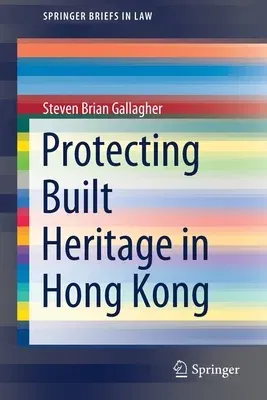Steven Brian Gallagher
(Author)Protecting Built Heritage in Hong Kong (2021)Paperback - 2021, 5 September 2021

Qty
1
Turbo
Ships in 2 - 3 days
In Stock
Free Delivery
Cash on Delivery
15 Days
Free Returns
Secure Checkout

Part of Series
Springerbriefs in Law
Print Length
111 pages
Language
English
Publisher
Springer
Date Published
5 Sep 2021
ISBN-10
9811650705
ISBN-13
9789811650703
Description
Product Details
Author:
Book Edition:
2021
Book Format:
Paperback
Country of Origin:
NL
Date Published:
5 September 2021
Dimensions:
23.39 x
15.6 x
0.66 cm
ISBN-10:
9811650705
ISBN-13:
9789811650703
Language:
English
Location:
Singapore
Pages:
111
Publisher:
Series:
Weight:
185.97 gm